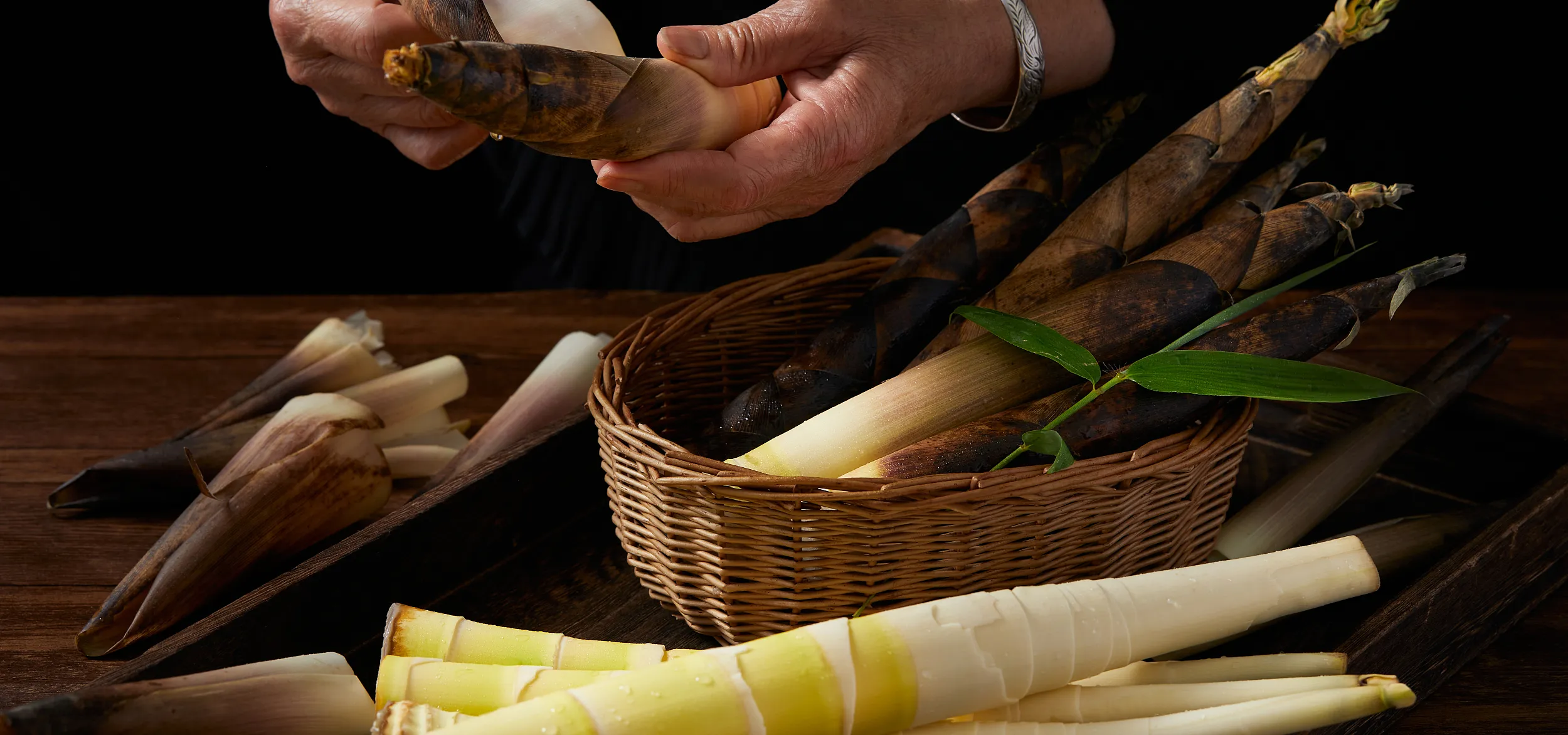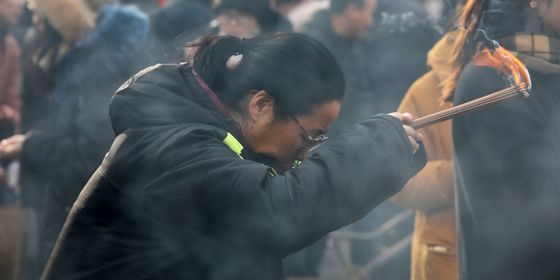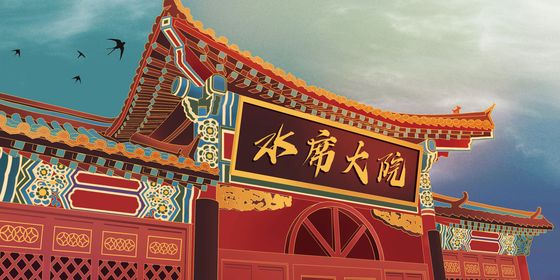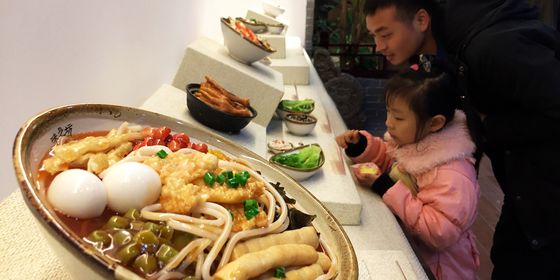Tender young bamboo was a vegetable much loved by literati
“Better to have no meat to eat than live where there are no bamboos/ A lack of meat makes one thin, while a lack of bamboo renders one vulgar,” the poet and gourmand Su Shi opined in the 11th century, invoking a traditional comparison between the tough, unyielding bamboo and the Confucian junzi (君子, gentleman).
Even the most virtuous sages, though, may crave some animal protein in their diet once in a while. This moral dilemma was resolved five centuries later by Li Yu, another writer and foodie who recorded a dish called “bamboo shoots with meat” in his book Leisure Writings (《闲情偶记》). But rather than the full-grown varieties, Li recommended using “immature” bamboos due to their soft texture and smooth taste.
Bamboo shoots, known as zhusun (竹笋) or simply sun (笋) in Chinese, have been eaten for at least 3,000 years in China. The ancient Book of Songs (《诗经》) stated that bamboo shoots were excellent vegetables to serve at farewell dinners. Tang dynasty (618 – 907) poet Bai Juyi wrote that if he could eat bamboo shoots daily, “I wouldn’t miss meat for long.” In Li Yu’s opinion, “Even lamb and pork are incomparable to this top-grade vegetable.”
Bamboo shoots mainly grow in the warm climates of central and southern China, including Zhejiang, Hunan, and Sichuan provinces. Song dynasty (960 – 1279) monk and scholar Zan Ning listed 98 varieties of the plant in his Book of Bamboo Shoots (《笋谱》). Most commonly, though, they are sold in several broad varieties: “spring shoots” (春笋) and “winter shoots” (冬笋), according to their two major harvest seasons; or “small shoots” and “big shoots” with a diameter roughly equal to one finger or one fist.
Spring shoots, which are picked after Lichun (立春, “spring begins”), the first solar term of the lunar new year (usually in February or March), are dubbed the “king” of spring foods for their tender and crisp taste. “Fresh and fragrant bamboo shoots are valued more than gold on Yuling’s markets,” claimed the Tang poet Li Shangyin. Emperor Taizong of the Tang, a fan of sun, reportedly treated officials with a “bamboo shoot banquet” each spring.
Bamboo shoots go equally well with vegetables or meat, but Li Yu preferred them “cooked in clean water or with fatty pork.” This may be the theory behind the Hunan dish “bamboo shoots fried with bacon” (竹笋炒腊肉), which pairs the aromatic spring vegetable with the streaky pork that Hunanese usually cure and preserve at home in winter. Hunan bacon is known for its special fragrance, chewy lean meat, and non-greasy fat. Bamboo shoots with white stems are preferred in this recipe over those with yellow and green stems.
Ingredients:
300g bamboo shoots 竹笋
200g bacon 腊肉
1 green pepper 青椒
2 dried chili peppers 干辣椒
6ml oil 食用油
4g salt 盐
3 cloves of garlic 大蒜
3g ginger 姜
1 stalk of leek 葱
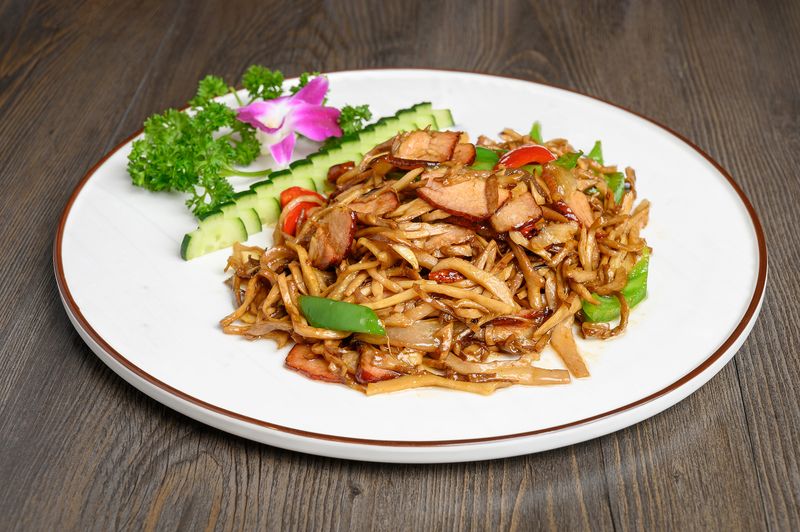
Steps:
- Shell and wash the bamboo shoots, then cut them into 1mm-thick and 5cm-long slices. Slice the peppers and chop the garlic, ginger, and leeks
- 2. Cook the bamboo shoot slices in 500ml of boiled water with 2g of salt for 3 minutes, drain and set aside
- Cook the bacon in 300ml of boiled water for five minutes. Wash it in cold water and cut it into 2mm-thick slices
- Heat 2ml of oil in a wok. Add and fry the bacon slices till they change color, then set them aside
- Heat 4ml of oil in the wok. Add and fry the garlic, ginger and dried peppers till aromatic, and then add the bamboo shoot slices
- Fry the bamboo shoot slices for two minutes. Add the green pepper and bacon and fry evenly
- Add the rest of the salt and leeks, and fry evenly
- Place everything on a dish and serve
Image from VCG
Shoots of Spring is a story from our issue, “Contagion.” To read the entire issue, become a subscriber and receive the full magazine.





